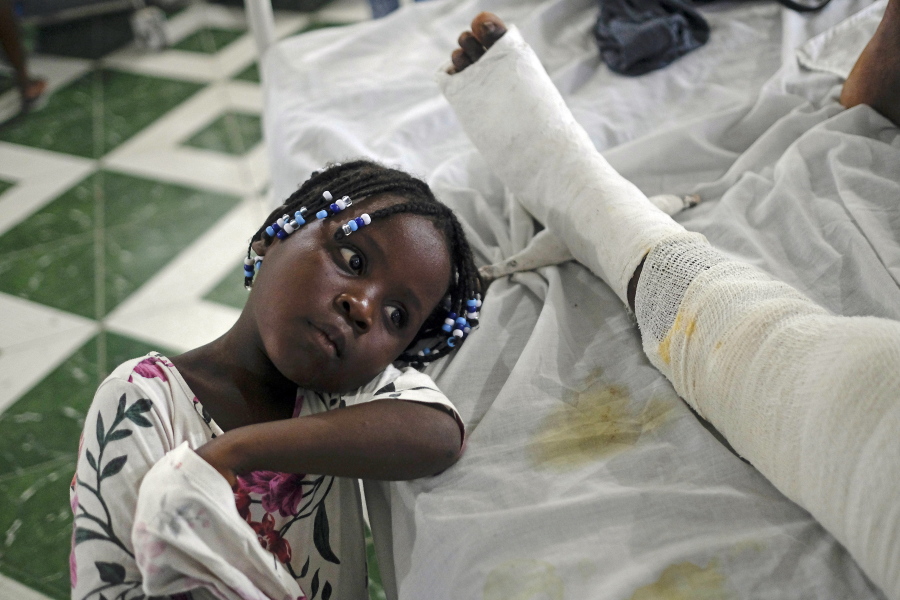LES CAYES, Haiti — Orderlies pushed Jertha Ylet’s bed from the center of the hospital ward to one side so Dr. Michelet Paurus could plug in his electric saw. She was silent as the doctor cut off her plaster cast in measured strokes.
Today she would have to leave the hospital, the doctor said.
Ylet had resisted until the cast came off. She’d been at Les Cayes’ General Hospital since being brought there Aug. 14, unconscious and with her leg crushed, after a 7.2-magnitude earthquake destroyed her house, killing her father and two other relatives and seriously injuring her brother. There is no home to return to.
A surgeon inserted a metal rod in her lower left leg on Thursday. Ylet, 25, had not been out of bed, much less tried to walk, since she arrived. Her 5-year-old daughter, Younaika, who was not injured, shared her bed and spent her days playing with other children around the ward.
More than a week after the earthquake on Haiti’s southwestern peninsula killed at least 2,207 people, injured 12,268 and destroyed nearly 53,000 houses, Ylet represents an emerging dilemma for the region’s limited health care services: how to turn over hospital beds when discharged patients have nowhere to go.
“I said to the doctor, ‘I don’t have any place to go,’” Ylet said. “I told them everything. The doctor doesn’t understand.”
In the first days after the quake, the hospital was overwhelmed with patients. The injured lay on patios and breezeways awaiting care. Now there are still people in those areas, but they are discharged patients or people who were never admitted at all, who have been drawn by the donations of food, water and clothing that arrive at the hospital daily.
“We have a lot patients who have been discharged, but are still hanging out in the yard,” said hospital director Peterson Gede. “The fact they know they will receive food and water … they don’t have any intention to leave.”
On Monday, Gede issued an order for hospital staff to begin to “motivate” patients to leave. It proved easier said than done. Not having a home to return to was a significant obstacle for Ylet and many others.
Ylet lost consciousness when a wall of her cinderblock house in Camp-Perrin fell on her as the quake struck.
Her boyfriend, Junior Milord, had left 20 minutes earlier for work. He froze in the street until the shaking stopped, then ran back to Ylet’s house. He found her buried near the front of the building, which unlike the back, had not completely collapsed.
“I thought she was dead when I first started removing the blocks,” Milord said.
He pulled her out and flagged down a passing car, which took her to the hospital in Les Cayes. “When I woke up I was in the hospital,” she said.



